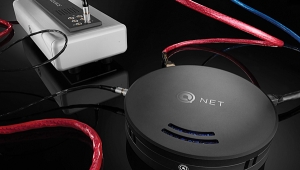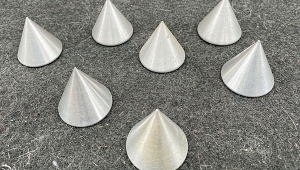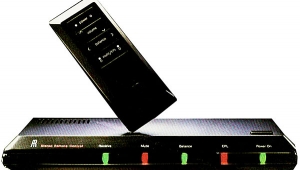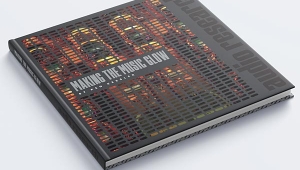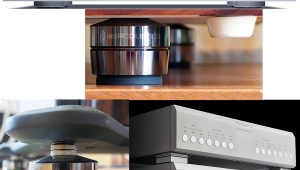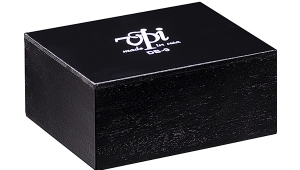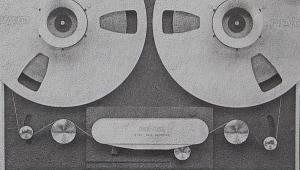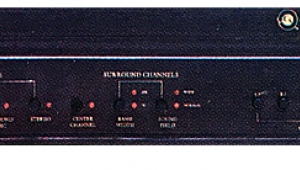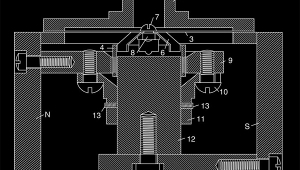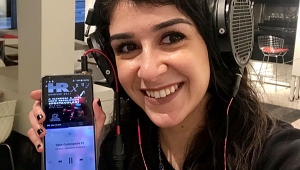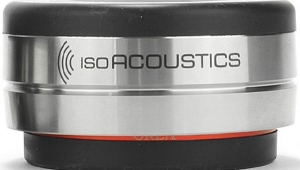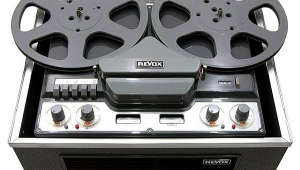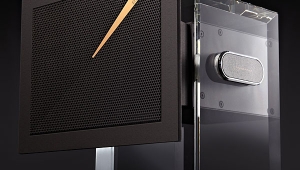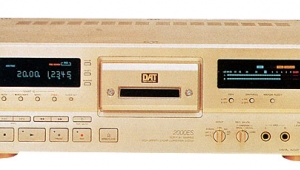| Columns Retired Columns & Blogs |
Book Review: Chairman at the Board

Chairman at the Board: Recording the Soundtrack of a Generation, by Bill Schnee. Backbeat Books, 2021. 219pp. $24.49, hard cover; $21.49, Kindle e-book.
Footnote 1: Stereophile never reviewed I've Got the Music in Me, but J. Gordon Holt did review Sheffield's earlier Lincoln Mayorga and Distinguished Colleagues Vol.II and the later Sheffield Track Record, both of which were engineered by Bill Schnee.
It was September 2012, and Sasha Matson and I were in Los Angeles to record the singers for his jazz opera, Cooperstown. We had already recorded the instrumental backing with engineer Mike Marciano at Brooklyn's Systems Two studio, and the venue for the vocal tracking sessions was Bill Schnee's studio in North Hollywood. I knew Bill's name from his work recording Sheffield Lab's legendary I've Got the Music in Me direct-to-disc LP (footnote 1) in 1975 with Thelma Houston and his two Grammys for Steely Dan's Aja and Gaucho. What I was not expecting when we entered his studio was the wall of gold and platinum records above the reception desk. This was a small selection: Bill has more than 125 gold and platinum discs.
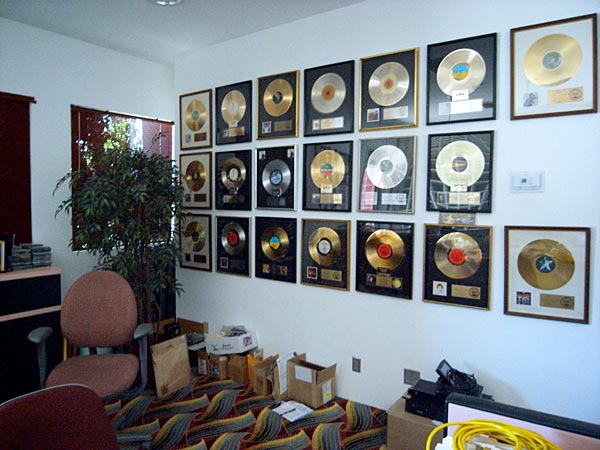
The weekend we spent working with Bill and his staff was pleasant and productive. To my regret, I lost touch with Bill in subsequent years. He relocated to Nashville with his wife Sallie and, at the end of 2020, he let me know that he was going to publish a memoir, Chairman at the Board, in March 2021.
Bill tells an engrossing story. He writes in the book's preface that he loves the process of making records: "[I]t's a collaborative effort by a group of creative people to make a singular vision come to life. At the start of a session, when you put a new roll of recording tape on the tape machine or plug in a hard drive, it's like setting up a new blank canvas. It's exciting to think that shortly a group of talented people will combine their individual skills and creativity, and a new entity will be born. Where once was nothing, soon there will be something that communicates to the minds and souls of those who hear it from that day to years to come."
That passion never ebbs over the book's 219 pages, during which Schnee discusses many of the more than 600 albums on which he has worked. It is a story of how chance favors those with the necessary innate talent.
During high school, Schnee played organ in a band. When Gary Usher signed the band to Decca Records, he wrote, they were "headed for stardom." Decca dropped the band after two failed singles, but Schnee's fascination with the recording process had been ignited while making the records at two legendary studios: Studio B at Capitol and Studio 3 at Western Recorders, where Brian Wilson and the Beach Boys did much of their work. (Western Recorders is now called EastWest Studios and, in a coincidental twist, Sasha and I recorded his Tight Lines album there in 2016 with engineer Michael C. Ross.)
A guitarist called Richie Podolor had played on the sessions for the Decca singles and subsequently recorded Bill's band at his own American Recording Studio. "The sound that came out of [Podolor's] speakers was unlike anything I had heard at Capitol or Western," Bill writes. "It was more immediate, had much more punch and character, and somehow was just more musical. ... For the first time I saw how the sound could add an emotional dimension to the music."
Three years after that moment of satori, during which, to please his father, he had enrolled in law school, Podolor hired Schnee as an engineer. On his third day, he recorded two tracks and some overdubs for Three Dog Night. That decided the course of his career. Mentored by electronics engineer Toby Foster and the late Doug Sax, Schnee was hired by Clive Davis at CBS, where he worked with producer Richard Perry.
The majority of the book's chapters discuss Schnee's experience of recording the many, many artists with whom he has collaborated, including Barbra Streisand ("warm and friendly, a fellow foodie"); Carly Simon ("an understated and down-to-earth person as I'd ever met"); Marvin Gaye; Pablo Cruise; Neil Diamond; Boz Scaggs ("lots of people in the music business act cool but Boz is cool"); Steely Dan; the Jackson Five; Huey Lewis; and Mark Knopfler of Dire Straits. ("When a mix was ready to print, he would hold his hand over the console and snap his fingers all around as if to sprinkle magic fairy dust on it.")
A highlight was working individually with John Lennon, George Harrison, and Paul McCartney on Ringo Starr's 1973 album, Ringo. Schnee recorded the Beatles—just not all at the same time!
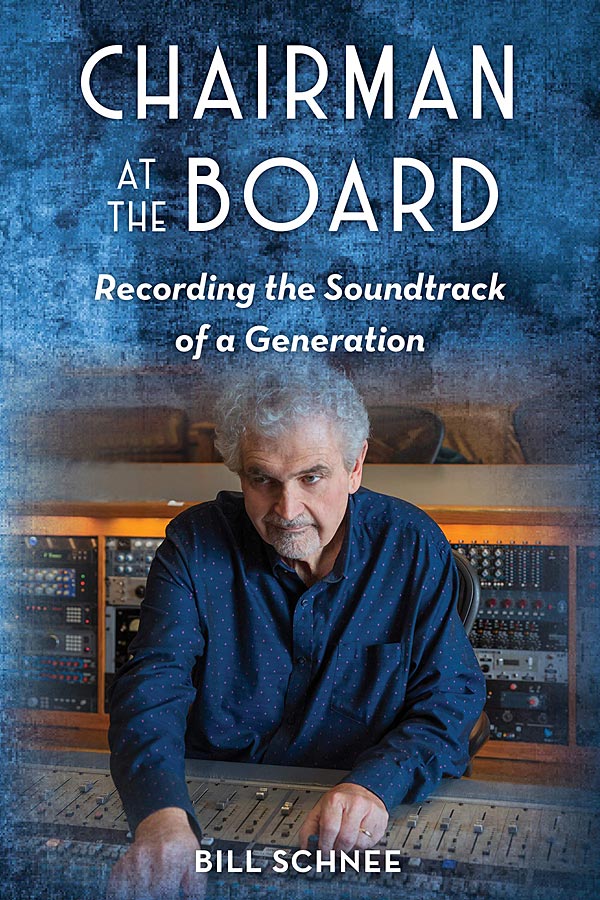
One thing that Schnee mentions more than once, especially in connection with Art Garfunkel's Breakaway album, is the danger of overthinking things when mixing a multitrack recording to stereo: "I have seen how thinking too much, including myself, can hamper creativity. I believe it's more productive in creative endeavors to let the right brain do the driving. It may not always make logical sense, but you tend to get the best results. Allowing the left brain to do the driving will not only take longer, but you're liable to miss the lovely scenery along the way."
The book ends with two appendices: "Technology and Music" and "Personal Philosophy and Other Random Thoughts." In these, Schnee is realistic about the technological changes that have happened in the industry that he has devoted his life to, but he laments some of the side effects:
"The digital era has allowed computer-based recording to become so inexpensive that a professional digital audio workstation is well within the means of everyone." That might be thought a good thing, but "With greatly reduced budgets, more and more major-label recordings are even being done in home studios. This has forced the closing of many great studios in all the major markets. Needless to say, for someone that loves studio recording and has spent decades honing his craft, this is very sad to me."
Schnee adds that "A particularly tragic fallout of not recording in studios is that musicians don't record all together anymore. Usually, a track is now built up one instrument at a time—very often in several different home studios. In this piecemeal way of recording, the synergy of musicians playing together is completely lost, where sometimes accidents or even mistakes are made that prove to be artistically significant."

Bill Schnee (left) at the mixing console for the Cooperstown vocal sessions, with composer/conductor Sasha Matson (standing), producer John Atkinson (center), and musician director Stephanie Vlahos (right).
On page 192, Schnee credits the ultrareliable, always-creative session musicians with whom he worked and who did play together. There are too many for me to list them all, but I will mention Larry Knechtel and Michael Omartian on keyboards, Jim Keltner and Jim Gordon on drums, Larry Carlton and Dean Parks on guitar, and Reinie Press on bass. They all played on the Sheffield Lab I've Got the Music in Me album, and they all demonstrated that under the intense pressure of the direct-to-disc process, they more than rose to the occasion. And he pays special tribute to the late Jeff Porcaro of Toto: "For me, the absolute 'King of Feel' was Jeff Porcaro. His place in recorded musical history will remain hallowed ground with drummers for all time."
Bill Schnee sums up his philosophy toward the end of Chairman at the Board: "To reach my goal of high fidelity meant learning all I could about making recordings as full range and dynamic as possible. ... To reach that end, one of the greatest lessons I learned from fellow audiophile Doug Sax was the art of critical listening. ... He taught [me] the art of critical listening. Critical listening would become the basis for everything I did from selecting a microphone to evaluating audio equipment. Historically, improvements to electronic products were primarily made by technical engineers using instrument measurements. But instruments don't listen to music—people do. Doug demonstrated how sometimes our ears show us aspects of sound quality that test equipment just can't measure." (footnote 2)
Amen to that thought from this technical engineer.
Footnote 1: Stereophile never reviewed I've Got the Music in Me, but J. Gordon Holt did review Sheffield's earlier Lincoln Mayorga and Distinguished Colleagues Vol.II and the later Sheffield Track Record, both of which were engineered by Bill Schnee.
Footnote 2: You can find our own tribute to Doug Sax and an interview I conducted with him in 1984 here.
- Log in or register to post comments
